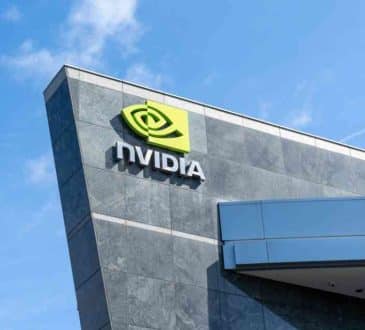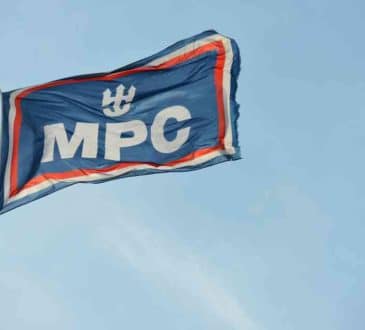What Really Is Going On and Rendering Accounts of Businesses

The Link Between Management Accounting and Financial Accounting.
Top-management is responsible for everything; for the annual accounts to be published too. Tell it like it is. People will guess at what is not explained. Regarding management accounting, responsible management is in need of the proven right net profit figures. Period profit is a result. It starts with an investment generating cash. After deduction of value differences and taxes, net profit remains. Share capital (embedded value – what really is present), shareholder’s value (economic value – what might happen, additional to the existing activities or ‘the market value of the company’s shares’) and cash flows, are all inter-related.
Analogous to the law of conservation of energy in physics, the law of preservation of value holds true in economics, a natural law. Laws of nature hold true independent of time and place. Preservation of Value, Jacobs, 1991, p. 39, 1e edition. 2e edition, KDP Amazon, 2020
Measuring and reporting a variety of non-financial indicators i.e. widening the information spectrum is a welcome development, generally speaking, but information about the game cannot step into the result. Management is in continuous need of up to date financial accounts, that are clear and complete, speak for themselves, contain proven numbers, and unravel the future. Ex ante accounts are signposts on the road to the future. Walking down the road, ex post accounts are made regarding past time periods and new data will generate new signposts on the road ahead. Nothing is able to replace thorough financial statements, not even the most extensive balanced scorecard/performance-review.
Raising shareholder’s value can be accomplished by better investing. Higher shareholder’s values and higher profits usually go together. A rise in shareholder’s value implies promises, expectations. To prove them, to fulfil them is another matter. Future profits will be the proof. The other way round, bad investments, lower shareholder’s values, and the future will look bleak. By measuring subsequent net period profits as accurately as possible after done investments, one can have the corporation at one’s finger tips. Triggering the whole operation. At the least little indicator one can give appropriate guidance on the necessary adjustment required. By not knowing the real period profit, one loses control.
Controlling what is going on i.e. running a business, is often different from rendering account to ‘the outside world’. Recently, companies’ year reports tend to have a wider scope in reaction to the growing notion that traditional financial accounts are covering just a part of the whole reality. Of course, it is not a matter of pence, but of principles and a lot more. Information about various aspects like milieu, corporate governance and social responsibility, is always desirable. Maybe principles and whatever are more important than money. Widening the information spectrum is a welcome development, generally speaking, but information about the game cannot step into the result. Information about financial performance acts as a guiding principle, internally (management accounting) for the management (per company unit, for short periods) and externally (financial accounting) for the financial markets (allocation of funds to this enterprise), but also for the authorities that govern the societies these enterprises belong to. It is important to know whether these enterprises are doing better or worse for reasons of policy making. Think of, for instance, governmental measures regarding tax, employment, the environment, knowledge, etcetera.
As it appears from the IASC framework for the preparation and presentation of financial statements, the objective is a fair presentation, to give a true and fair view, to provide faithful information about the financial position, performance and changes in financial position of the enterprise, that is useful to a wide range of users in making economic decisions. The annual accounts have to faithfully reproduce the one and only reality, according to the law in the Netherlands (Part 9, Book 2 of the Netherlands Civil Code) and also in other countries, for instance the UK. In the UK, the Companies Act requires that accounts should show a true and fair view. There may be no real difference really, besides the detail, between the external, published reports on the one hand and on the other internal documents. Though it may not be officially recognised, it is common knowledge that there are vast differences. In fact there are three separate financial perspectives of an enterprise:
- The fiscal reality, which is a secret between the taxpayer and the exchequer
The fiscal profit figure is calculated mostly on the basis of HC (Historical Costs) and even the exchequer knows, it is no more than just a basis of levying that which has been counted in this artificial way. Historical costs are fiscally acknowledged. Apart from that they do not have much significance. The assessment of accruals (unexpired costs, recorded in the closing balance sheet), the application of completely arbitrary allocation rules, and ignoring the time-value of money, impart HC-accounting as not being relevant otherwise than in ‘de jure’ accounts. By way of setting higher or lower tax rates and by special arrangements, the exchequer is trying to keep in close touch with the reality. The same applies mutatis mutandis to the actually published profit figures in relation to changing pay-out ratios. - The reality according to the accounts (US-GAAP and other practices) that are published in various countries
Notwithstanding all efforts of the IASC (International Accounting Standards Committee), there are still many book-keeping methods, each with its own peculiarities. Also the new IASB rules, set by the International Accounting Standards Board, into practice from 2005 on, do not meet reality.
Senior executives in discussion with Wall Street analysts are presenting a more or less acceptable cast or image of the reality. Deflections are acceptable beforehand. As a matter of fact, as long as one is not right of beam, the published accounts will do. Telling the whole truth (presupposition it exists) is not recommendable in the first place, because everyone – including the enemies – is listening. The truth is often embarrassing. The organisation is a self-reliant organism. Third parties, including the shareholders, operate mainly on the basis of trust. Who wants to hear everything? - The one and only right internal periodical account
The existing valuation conventions including the resolutions of the IASC are just a part of the reality. Though an item is in conformity with laws and rules, it is not necessarily the one and only truth. ‘De jure’ correct is often different from ‘de facto’ right. Fiscal accounts and the accounts to be published (financial accounting) are different in many countries because of different laws and rules. And no wonder; many people have an interest in this since it can influence such important matters as the levels of wages and prices, taxation and dividends. It is obvious that there is much diversity of opinion everywhere.
A responsible manager of an entire enterprise or a single profit-center has to know what the existing total value is and the added value, in other words the capital together with the profit. The yield i.e. profit divided by capital, must be reliably known within a known margin of accuracy, under specified conditions, to be able to give guidance. One needs to know the tolerances. If the tolerance in the handle-bar is too big or unknown, who dares to go for a bicycle ride? Which daredevil, not knowing enough about the tolerances, gets it into his head to manage a company? The internal documents may be kept secret in my opinion, if that is necessary to enhance the truth.
What an enterprise likes to publish or has to publish according to law, rules and regulations, is (in the author’s opinion) quite another story. The having gone bankrupt companies showed annual accounts authorised by the accountant until the end. A lawyer who saw a lot of bankruptcies happen once said: “the audit by a chartered accountant guarantees only that the figures are added up correctly; there is no guarantee whatsoever that the figures are indeed correct, in conformity with the reality.” Verified internal profit and yield-figures – information produced for management decisions within the firm – are the most important considerations for the management of a company. What does the top executive say in the published reports of the company, if he / she doesn’t fully understand what has happened him / herself?
The profit is an ‘after the fact’ figure. When one is looking at an entire year one looks back at the annual profit figure with one’s back to the future as it were, while the enterprise may well be heading straight for a disaster. Thus considered, profit figures are of little use. Profit, however, is not just the consolidated annual profit of a group, but it mainly consists of the detail profits of one specific activity or company unit for short periods. Knowledge of these profits is essential to give guidance and to be able to adjust. In the end good management is about creating increased value, it is as simple as that. The total of the profit for a period is the sum of its parts. The profit on each product in that period is a part. Regarding the profit in addition to its composition – the profit contribution for each company unit, for each product (or group of products) and for each customer (or group of customers) – who would not want to be well informed on these matters?
One can compare a company with a gang of skaters in a tournament. Some of them choose longer and others shorter distances. Different products, activities, units, divisions. The total result of the gang in the tournament is the addition sum of individual achievements. A year-ride, 13 rounds of 4 weeks each. Lap-times. From lap to lap, how many fingers of the coach go up, down? Acceleration and slowing-down during a race can be calculated by measuring the lap-times. Without knowing the lap-times, it is difficult to say anything meaningful about accelerations and decelerations during the course of the race. Use The Profit Formula® to measure period profit Exactly, Quickly and Easily.
Shareholder’s values are birds in the bush. Not in the hand yet. The principle of realisation, provided a correct interpretation, defines what profit is. Profit is like milk. There is milk after the milking. The milking-stool seems to have three legs: people, planet and profit. Before the milking there are expectations, promises, changing shareholder’s values, whatever, but no milk. Period profit is an ex-post entity. Exante, profit projections and forecasts can be given. The measurement of profit however can only be done ex-post.
The link, especially between shareholder’s value and period profit
Shareholder’s value, the worth of the operations department, is at any moment the present value of all future proceeds minus loans. This shareholder’s value including loans is – in bare form – the notion NPV. The NPV is rather high in the beginning of the economic life cycle and NPV will be low at the end of the economic life cycle, when future proceeds usually diminish.
Remaining problems cannot be excluded and new problems will arise in times to come. Nevertheless the process starts with the solution to a basic problem, to find the one and only proven outcome in the case of a classic example. To identify what is not solved and what can be solved, is the first step in the search for more scientific knowledge. Of course much is not solved. Many needs remain unfulfilled. The continued existence of remaining problems does not interfere with the fact that the essential problem of the linkage between shareholder’s value and period profit has now been solved.
Beyond the point of no return, management’s job is to carefully monitor. One will see cash inflows and cash outlays, the real ones, in each and every period, the difference is CASH i.e. the first term in The Profit Formula®. Project performance measurement, monitoring and control, from project inception to completion. Assessing NVA is transparent, it eases the tension among multiple interest groups and it makes the decision-making less complex, costly and subjective. Compared to the disparity of metrics (between project appraisal and subsequent evaluation) so far applied to measure and control project performances.
Free downloadable paper, entitled ‘Neither EVA® nor CVA®, but NVA – Measuring Financial Performance, Uninterrupted, from Start to Finish’
(this paper can be downloaded from the Social Science Research Network Electronic Paper Collection. All calculations (ex ante; a particular set of basic data; a strategic investment proposal) end up in the same NVA altogether at t = 0, independent of the underlying presuppositions.
Written by Jan Jacobs. Have you read?
Best Hospitality And Hotel Management Schools In The World For 2021.
Best Fashion Schools In The World For 2021.
Best Business Schools In The World For 2021.
Best Medical Schools In The World For 2021.
Follow CEOWORLD magazine on Facebook, Twitter, Instagram, and LinkedIn.
Add CEOWORLD magazine to your Google News feed.
Follow CEOWORLD magazine headlines on: Google News, LinkedIn, Twitter, and Facebook.
This report/news/ranking/statistics has been prepared only for general guidance on matters of interest and does not constitute professional advice. You should not act upon the information contained in this publication without obtaining specific professional advice. No representation or warranty (express or implied) is given as to the accuracy or completeness of the information contained in this publication, and, to the extent permitted by law, CEOWORLD magazine does not accept or assume any liability, responsibility or duty of care for any consequences of you or anyone else acting, or refraining to act, in reliance on the information contained in this publication or for any decision based on it.
Copyright 2024 The CEOWORLD magazine. All rights reserved. This material (and any extract from it) must not be copied, redistributed or placed on any website, without CEOWORLD magazine' prior written consent. For media queries, please contact: info@ceoworld.biz
SUBSCRIBE NEWSLETTER








